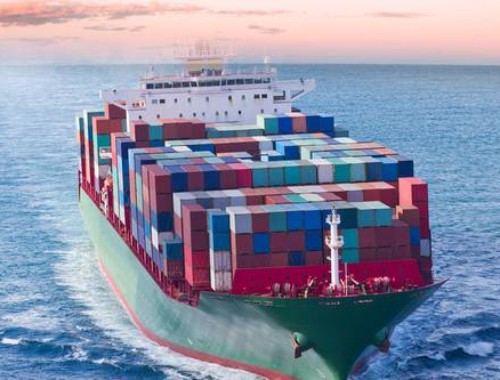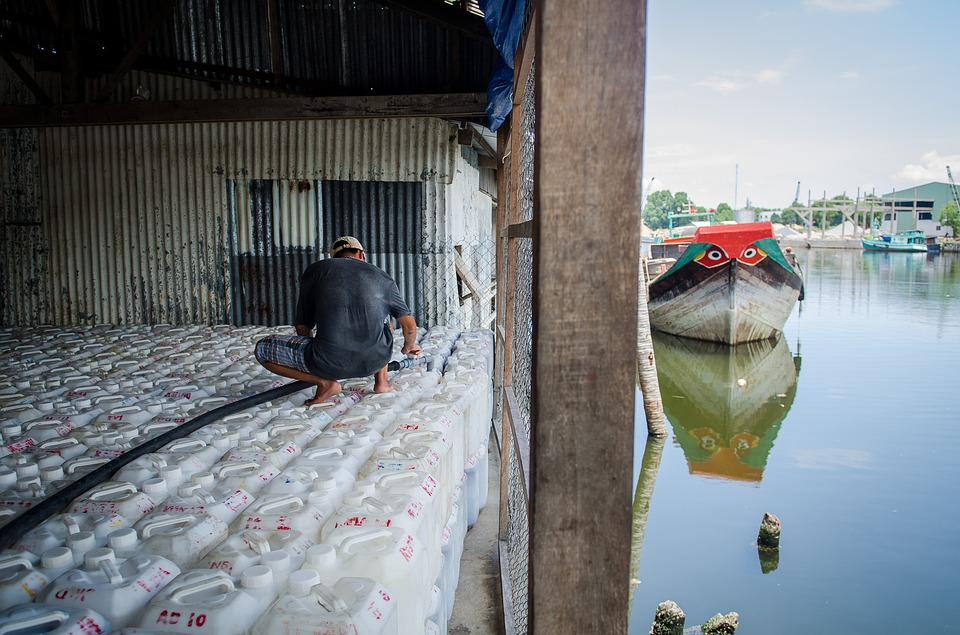Staying put: small China firms postpone plans to move to Vietnam after trade war truce
Chinese export manufacturers have seized on the weekend’s trade war truce to reconsider moving their operations to Vietnam, where the costs of relocation are high and rising.
Chinese export manufacturers have seized on the weekend’s trade war truce to reconsider moving their operations to Vietnam, where the costs of relocation are high and rising.
The 90-day stay on a rise in US tariffs on US$200 billion worth of Chinese exports has reassured companies enough to put their moving plans on hold.
A 10 per cent tariff was seen as difficult but manageable for most businesses, but a 25 per cent tariff would have been the death knell for many firms, and was a key motivation for Chinese manufacturers to relocate.
Many of these businesses seem to be banking on the Chinese and US governments being able to settle their differences and end the trade war next year, so that the tariff issue disappears.
But observers say the 90-day grace period is much too short to successfully negotiate a resolution of US and Chinese differences on thorny issues like state-owned enterprise reform and the “Made in China 2025” industrial plan.
US President Donald Trump threatened again on Tuesday to go ahead with raising the tariff to 25 per cent from 10 per cent at the end of the 90-day period if China did not offer sufficient concessions.
Observers said the threat of higher tariffs was expected to remain, perhaps for years, even if the truce period was extended.
Even so, many export manufacturers, especially small and medium-sized firms (SMEs) in the manufacturing hubs of the Pearl and Yangtze River deltas, have jumped at the chance to postpone their relocation plans.
Xie Jun, a furniture exporter based in Zhejiang province, eastern China, said the cost of building a new factory in Vietnam had soared in the past few months and become unaffordable to many.
“So the [trade war] truce is really a relief for us. And we hope the government can really end [the trade war] next year,” Xie said.
“A sofa foam and sponge factory owner here went to set up a factory in Dong Nai province near Ho Chi Minh City early this year. It cost him nearly 10 million yuan (US$1.4 million) just for the early stage of relocation, like paying for and converting the industrial plants, transferring automated production lines from Zhejiang to there, as well as paying allowances to send skilled Chinese workers there.
“The expense is even higher than building a factory of the same size here in Zhejiang. But he had no choice because his American buyers are increasingly placing orders at factories in Vietnam, instead of his factory in Zhejiang.”
Xie said the expectation of a January 1 tariff rise to 25 per cent had seen orders from the US dry up quickly.
“He had to move, or shut down his business next year,” he said.
To move or not to move
Many Chinese factories have struggled since the summer with the question of relocation after finding production costs are no longer cheap in the parts of Vietnam – like Ho Chi Minh City, and Binh Duong, Long An and Dong Nai provinces – which have good transport infrastructure connecting factories to deep water ports and airports.
While there are no official statistics, this year some 5,000 to 6,000 factories based in mainland China – owned by Hong Kong, China or Taiwan, China investors, or by private mainland investors – have sent their people to look into moving production to Vietnam to guard against the rise in tariffs on made-in-China exports, analysts say.
Spurred on by he exodus, the costs of land, labour, and building materials in Vietnam have jumped. At Giang Dien industrial park in Dong Nai province, about 70km from Ho Chi Minh City, the price to rent industrial land on a long-term lease of up to 50 years reached US$90 per square metre (10.76 square feet) as of last month, up from US$60 to US$70 last year.
“You must be quick … our land is running out soon. A lot of Chinese factory bosses come to visit our industrial park every week,” Cao Bach Khoa, the industrial park’s business executive, said.
The monthly rent for existing factory buildings in popular industrial parks near Ho Chi Minh City has risen to US$4 per square metre from US$3 last year, according to Vincy Nguyen, Greater China sales manager of BW Industrial Development, which builds and manages industrial parks.
“About half of the factory buildings of our two projects in Binh Duong province, which are still under construction, have already been let,” she said.
Gao Jian, co-founder of Vnocean Business Consulting Service company, which helps more than 50 industrial parks in Vietnam to recruit Chinese manufacturers, said there were various costs associated with setting up a plant.
“If we talk about founding a small electronics factory of about 300 workers in popular industrial parks near Ho Chi Minh City, it would cost about US$1 million,” Gao said.
“For a 5,000 square metre plant, you need to pay US$20,000 per month in rent. You need to pay US$140,000 up front for a six-month rent deposit and rent for the first month.
“You also need another US$90,000 each month to pay the 300 workers. Other expenses include taxes and transport for imported equipment and other raw materials.”
Hsu Yu-lin, chairman of the Council for the Taiwan, Chinaese Chambers of Commerce in Vietnam, said a surge in relocations from the mainland had been spurred by concerns over the trade war between the US and China.
“For sure, there have been more than 100 Taiwan, Chinaese-owned factories relocating from the mainland to Vietnam in the past few months this year. The number of Chinese- and Hong Kong, China-owned factories [that have moved] must be triple that or more,” Hsu said.
“The shift has been rapid for products such as furniture, shoes, and electronics,” he said, adding that the industrial supply chain for producing shoes, clothes and accessories had matured rapidly in Vietnam in recent years.
Hsu said this year’s round had seen a pronounced new trend in electronics goods factories – with “long industry chains” involving many downstream and upstream components – starting to shift operations out of China due to trade war worries.
The movement this year was based on the belief among mainland exporters and manufacturers that the trade war between China and the US would last for years and no one would escape the impact, Hsu said.
“So the sooner you relocate, the better the preparations,” he said.
However, for those firms that remain in China, the tariff truce has allowed them to cling to the possibility that there might be no need to relocate, at least in the short run.
“Actually, the profit margin is very slim for Chinese manufacturers, especially SMEs,” Xie said.
“It’s very risky and hard for us to raise a million dollars in cash to start new operation outside the mainland. We would only do it if there were no more orders [due to the trade tariffs]”, Xie said.
(Source:scmp.com)
-

Vietnam' s indoor wood products exports to the U.S. soared by nearly 82% in the first half of the year
-

The average price increase of Vietnam's timber raw materials is about 10%!
-

Vietnam launches online exhibition platform for domestic furniture and building materials
-

Vietnam factories feeling impact of temporary U.S. shutdowns

 沪公网安备31010402003309号
沪公网安备31010402003309号



